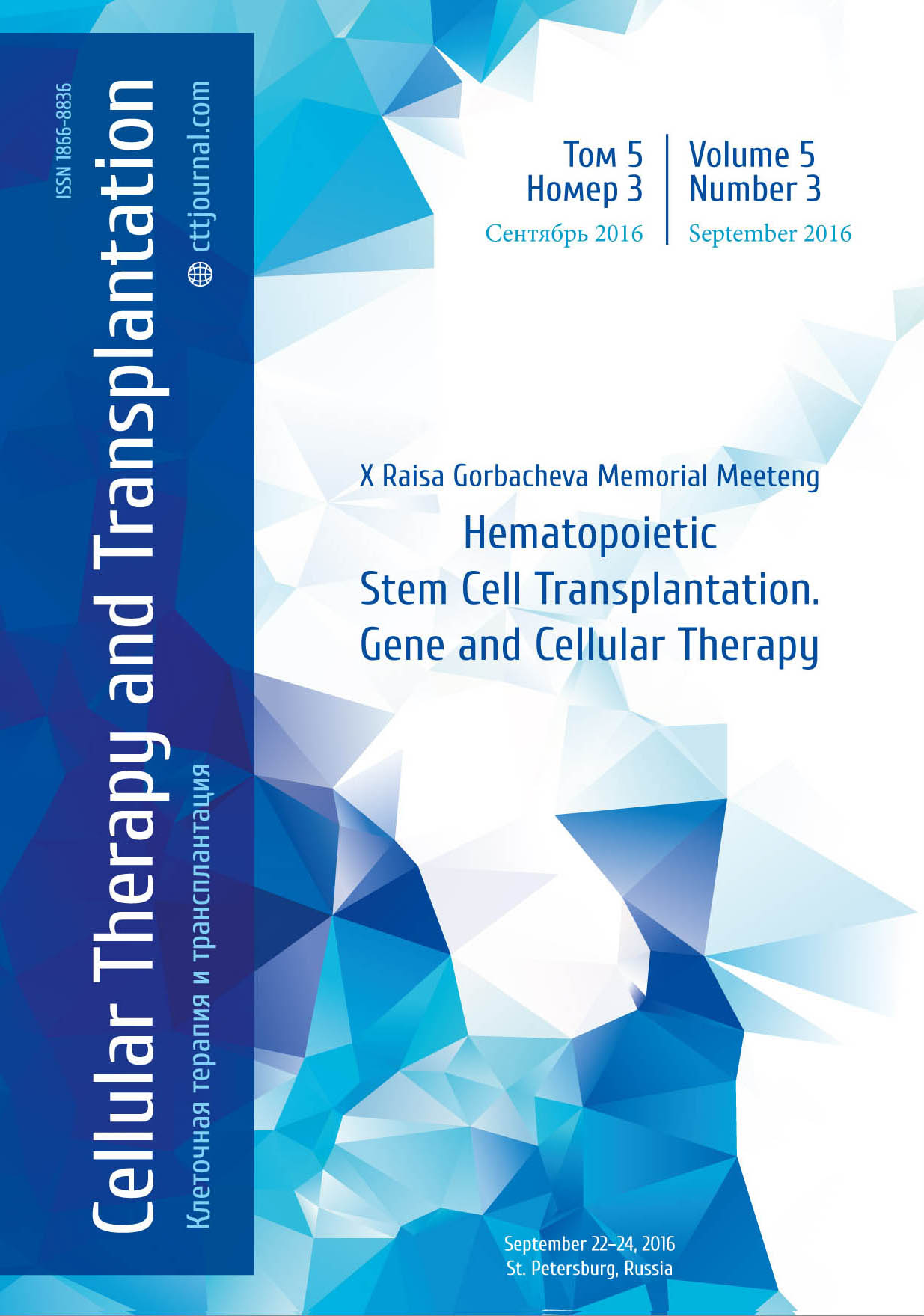Usage of online platforms for remote evaluation of the quality of life in patients following allogeneic transplantation of hematopoietic stem cells on the territory of Russian Federation and ex-USSR
Сontact: Dr.Darya Dubnyak
E-mail: darya-dubnyak@yandex.ru
Accepted 29 September 2016
Summary
Introduction
Transplantation of allogeneic hematopoietic stem cells (allo-HSCT) is now actively developing in Russia, despite a lot of information about clinical outcomes of allo-HSCT. There is little data about quality of patients’ life (QoL) at different stages, especially at late terms (over 5 years) after allo-HSCT. One of the main limiting factors for this research is the unwillingness and inability of most patients to visit the transplant center due to subjective «complete wellbeing» at later terms after allo-HSCT (for many reasons, including location on large distance). The aim of our study was to conduct a remote survey/interview and to identify the main factors influencing QoL in the patients’ after alloHSCT using an electronic version of the WHOQOL-BREF questionnaire.
Patients and methods
The research was performed from January to May 2016 in Bone Marrow Transplant Department at the National Research Center for Hematology. To conduct this study, an electronic interactive version of Russian WHOQOL-BREF questionnaire was developed. This survey was approved by WHO. It includes 26 questions classified in four areas («domains») of human life, i.e., physical health (domain 1), psychological health (domain 2), social relationships (domain 3) and environment (domain 4). Every answer was measured by means of a 1-to-5 point scale. The points were summarized and recalculation was made according to the algorithms approved by WHO. Finally, all the data collected were presented as separate statistics for each domain at a scale of 1 to 100 points. According to literature data, the average value at each scale is 75 ± 2.5 for Western population (Cummins, 2003). The survey covered 63 patients. They underwent allo-HSCT within a period of 2006 to 2016 including cases of AA (4); LPD (2); MDS (4); MM(1); MPD (2); ALL (8); AML (38); CML (4). The group consisted of 37 women (59%) and 26 men (41%), with a median age of 37 years (21 to 63 years old). Allogeneic bone marrow transplantation from related donors was performed in 47.6% of patients (n=30), from matched unrelated donor, in 41% (n = 26), and from unrelated partially-matched donors, in 11% (n=7). Acute GVHD (stage II-IV) was diagnosed in 30% of cases (n=19). Chronic GVHD (cGVHD) was detected in 41% (n = 26).
Results
The survey involved recipients of blood stem cells and bone marrow from 22 cities, 16 regions of Russia, 3 countries of the former USSR. A Cronbach’s α value was 0.894 of the value reliability (internal consistency) of the questionnaire, thus indicating to sufficient reliability (internal consistency) of the test for this group of patients. Primary data analysis involved information over the four evaluation domains for all the patients at different stages after allo-HSCT. Terms posttransplant proved to be the major factor influencing QoL. Design of a multiple regression model has shown the main factors affecting physical sphere in patients after allo-HSCT: age at the time of survey, presence of cGVHD, sex of patients. The determining quotient for these factors was 0.427 (e.c., assessment of physical sphere for the patients after allo-HSCT can be explained by these 3 factors in 42.7%). We determined standardized coefficients (beta) – factors which were used to compare the results of the effect of different independent factors (gender, age at the time of a survey, the time passed after alloHSCT, presence of acute and chronic GVHD in past period) upon dependent variables (the result of a survey by each of the «domains»). While assessing psychological sphere, we got an appropriate coefficient of determination which did not allow us to talk about significant effect of these factors (including aGVHD) on psychological sphere. According to our data, age at the time of the survey is a leading factor for the social sphere. It seems rational since significance of values in social sphere is reducing with age. When assessing environmental factors, we have shown that the time after allo-HSCT is a main factor (R2 = 0.193) which correlates with patient’s gradual adaptation for environment after long illness and reduced frequency/ duration of hospital staying.
Conclusion
According to our research, the time passed after allo-HSCT is one of the main factors affecting quality of life of patients after transplantation of allo-HSCT on the territory of the Russian Federation and former USSR. The results of an online QoL survey among patients after allo-HSCT 5 years after transplantation are comparable with average values in the population.
Accepted 29 September 2016


